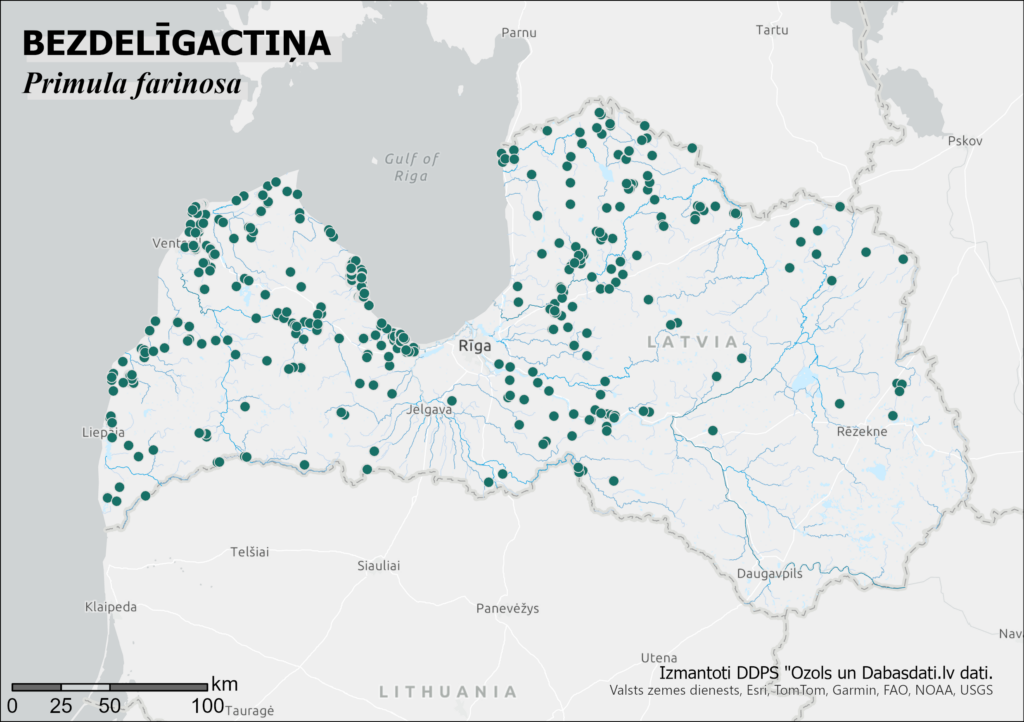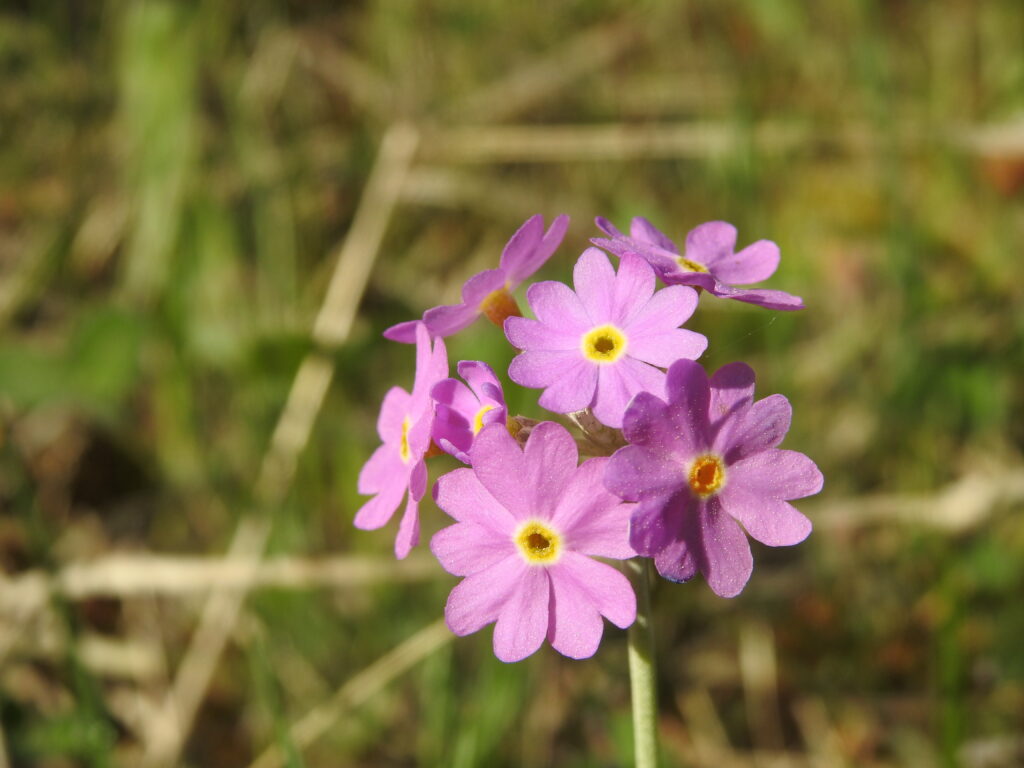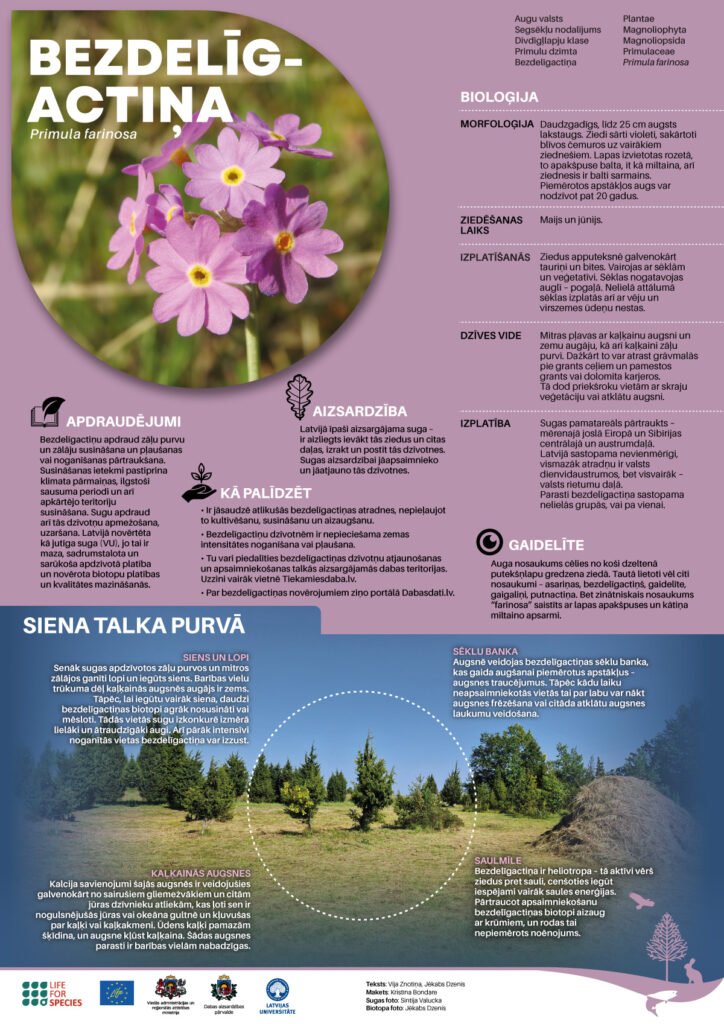Protected species of the month - bird’s-eye Primrose
This weekend, many of us will be heading out into nature in search of traditional midsummer plants. But before the celebrations begin, we encourage you to get acquainted with this month’s protected species – the bird’s-eye primrose (Primula farinosa). Learn how to recognize it, so it doesn’t accidentally end up in a festive wreath or decoration!
The species name refers to the bright yellow ring of stamens at the center of the flower. In Latvian folk tradition, the plant is also known by several other names, such as asariņas, bezdelīgactiņš, gaidelīte, gaigaliņi, and putnactiņa. The scientific name “farinosa” comes from the mealy coating on the underside of the leaves and the flower stalk, giving it a powdery appearance.
The bird’s-eye primrose is a perennial herbaceous plant that grows up to 25 cm tall. Its flowers are pinkish-purple and arranged in dense clusters on multiple flower stalks. The leaves form a rosette and have a white, mealy underside, as do the flower stalks. In the right conditions, the plant can live for up to 20 years!
You can read more about the bird’s-eye primrose and how you can help protect it in the species fact sheet (available in latvian). The PDF version is available [here]. Fact sheet design by Kristīna Bondare.
The species is threatened by the drainage of fen meadows and grasslands, as well as the abandonment of mowing or grazing. These impacts are worsened by climate change, prolonged droughts, and drainage in surrounding areas. Additional threats include afforestation and ploughing of its habitats.

In the LIFE FOR SPECIES project, the bird’s-eye primrose has been assessed as Vulnerable (VU) due to its small, fragmented, and declining range, alongside observed loss of habitat area and quality.



